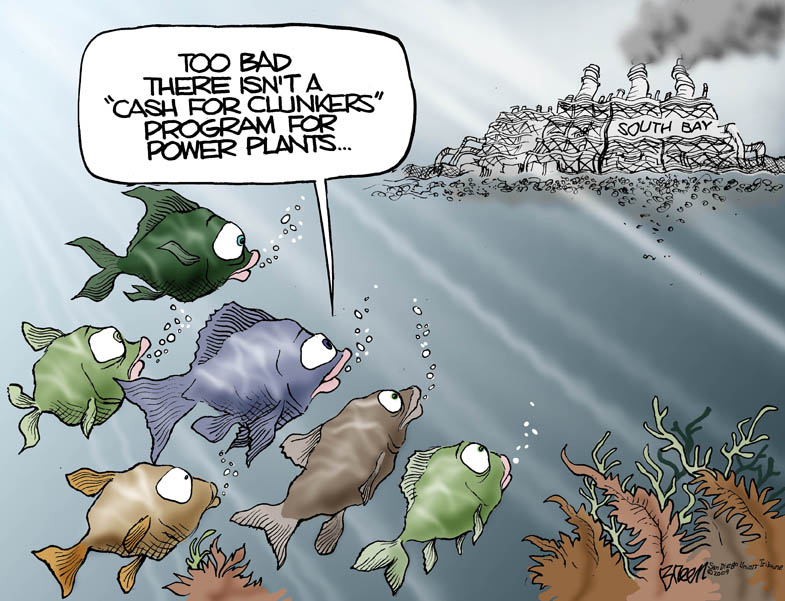For the first of a three part series written by Laura Hunter, who lead a 20 year effort to stop the South Bay Power Plant from operating, she'll explain why the end of this dirty power plant means the end to decades of damage to downwind environmental justice communities of Chula Vista and San Diego.
An environmental justice victory
Part 1 of 3
 The location of the South Bay Power Plant in this low-income neighborhood was a part of many, all too frequent, acts of environmental injustice that took place in the past. Our residential communities and schools downwind from the dirty power plant suffered for decades from the pollution. Communities were forced to deal with toxic and particulate air contaminants, noise, and fallout from burning oil and natural gas in the power plant.
The location of the South Bay Power Plant in this low-income neighborhood was a part of many, all too frequent, acts of environmental injustice that took place in the past. Our residential communities and schools downwind from the dirty power plant suffered for decades from the pollution. Communities were forced to deal with toxic and particulate air contaminants, noise, and fallout from burning oil and natural gas in the power plant.
This was a classic case of environmental injustice where the low-income communities of color shouldered a far disproportionate burden for benefits accrued primarily to others. While the plant needed to be located on the water, Chula Vista was chosen because it was close, but not directly in, downtown San Diego. From this location the energy could be used to support the growing demands of the expansion and development of urban San Diego, however, the impacts were borne by communities in the South Bay. The neighborhoods living in a six mile radius of the South Bay Power Plant, according to 2010 census figures, were 83 percent Latino and people of color, with 16 percent living below the poverty level (as compared to12 percent throughout San Diego County).
South Bay's environmental injustice wasn't the only story in the state. It was told over and over throughout California for decades. For example, one study showed that 89 percent of dirty power plants were sited in areas which had over 50 percent of people of color within six miles. Latinos were particularly over-represented in communities where power plants were sited. Within the statistic of people of color stuck to deal with almost all of the state's power plants, 83 percent of them had an average household income less than $25,000 a year.
Back to San Diego, the air pollution from South Bay's dirty power plant had a significant negative impact on local communities. Over the decades of operation, the power plant ran on both natural gas and oil – oil when there were natural gas cutbacks. While natural gas is cleaner that oil, there are still significant amounts of toxic air contaminants, particulate matter, and nitrogen oxides emitted from its use.
Estimates show that while in operation, the South Bay Power Plant emitted 1,900 tons of carbon pollution, 3.1 tons of nitrogen oxide pollution, and 1,600 pounds of particulate pollution into the air per day. Because the plant was outdated technology, it was far less efficient and far dirtier than newer plants, so emissions were unnecessarily high.
We're happier that our local school students, teachers and residents will be breathing easier now that the power plant has stopped operating.

